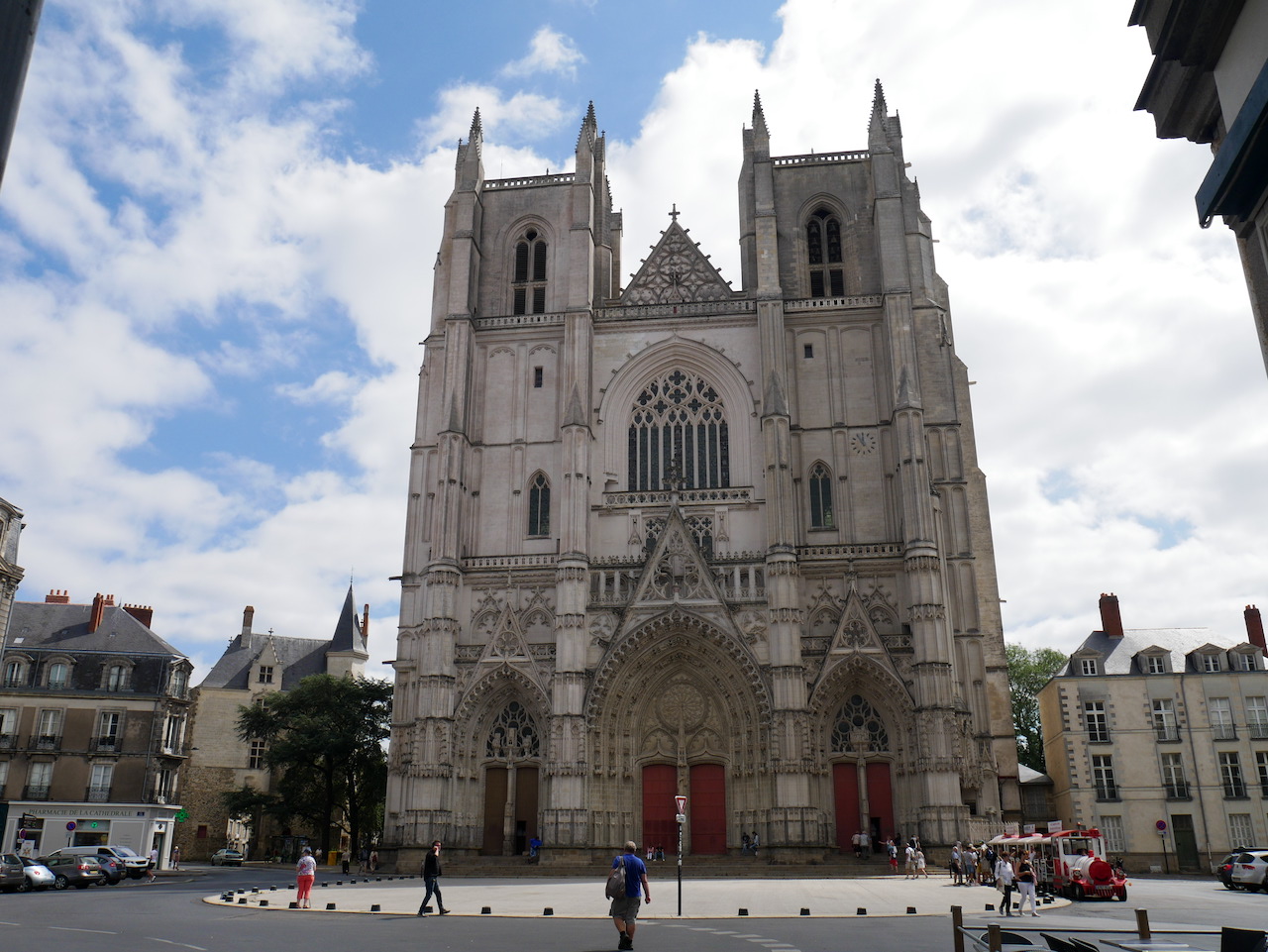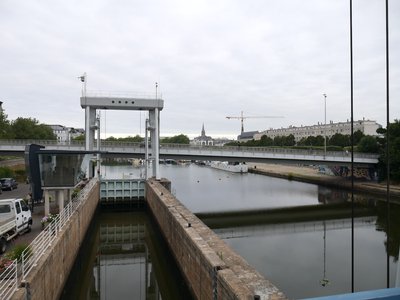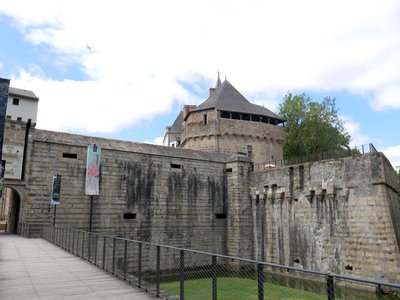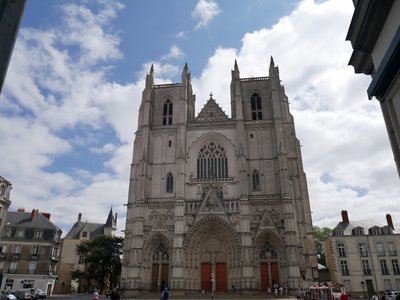
5. Le Cellier to Nantes
6 points of interest

Vue de la Loire depuis la passerelle sur le bras-mort. - Amis saint Colomban PanoramicInsel Clémentine in Sainte-Luce-sur-Loire Island Clémentine at Sainte-Luce-sur-Loire
According to local legend, a young woman named Clementine gave birth there clandestinely and thus gave her name to the island. Until the 1950s, Clementine Island was a lumber, hay and wicker farm. The City of Sainte-Luce acquired it in two phases: 1973 and 1986. Then, it planted a few trees, built a pedestrian bridge, installed children's playgrounds, and developed picnic areas and a sports trail.
Today, Clementine Island offers magnificent views of the last wild river in Europe that bathes its banks. After leaving the island, you can admire the village of Bellevue by taking the Grande Randonnée No. 3 trail. On the banks of the Loire, this village bears witness to the occupation of the site at the beginning of the century. The fishermen's huts and "garden houses" date back to the 1930s, when Bellevue was a holiday resort for the people of Nantes in search of green spaces, fishing and swimming.
L’entrée au port de plaisance sur l’Erdre - Amis saint Colomban TouristPort Saint-Félix in Nantes
The Via Columbani crosses the Saint-Felix lock.
The river, the Erdre, runs through the city centre of Nantes. A 700 m long tunnel leads into the port of Saint-Félix. This river tunnel was dug in the 1930s as part of the work to fill in the Erdre river to allow the Nantes-Brest canal to flow into the Loire.
The lock and landfill works were built at the same time as the tunnel in the early 1930s. This structure ensures the outlet of the Erdre into the Loire. It consists of a 50 m long by 7 m wide lock for the passage of boats, a removable weir and two bottom gates for regulating water levels.
Ex-Usine LU - Amis Bretons de Colomban CulturalThe Unique Place
The "Petits Beurres" LU biscuits with their teeth were born in Nantes.
The Lefèvre-Utile company started the construction of the production plant in 1895. Only one of its two Art Nouveau towers remains today. In 1986, production was transferred outside the city. The cultural milieu then appropriated the industrial wasteland and the Lieu Unique was created in 2000.
L’entrée du château des ducs de Bretagne à Nantes - Amis saint Colomban HistoricalCastle of the Dukes of Bretagne
Located in the historic heart of Nantes, the Castle of the Dukes of Brittany is the flagship monument of its urban heritage, along with St Peter's Cathedral.
On the city side, it is a defensive fortress whose 500-metre-long rampart walk is punctuated by seven towers linked by curtain walls founded in the 13th century.
On the courtyard side, it houses an elegant 15th century ducal residence made of tufa stone, in flamboyant Gothic style bearing the first signs of Renaissance inspiration, and other buildings dating from the 16th and 18th centuries. These contrast in their whiteness and sculpted refinement with the harshness of the exterior walls made of granite blocks separated by schist layers.
More info at: Wikipedia
Hôtel de La Psalette - Amis Bretons de Colomban HistoricalThe Psallette
A la fin du 15ème siècle, le développement du château et de la cour ducale entraîne la construction, par les hauts dignitaires, d’hôtels à proximité. L’hôtel de la Psallette est ainsi édifié en 1462 par Jean Gougeul de Rouville qui y mène une vie publique et privée.
Au 19ème siècle, l’hôtel accueille la maîtrise de la cathédrale (la psallette) qui lui donne son nom.

Façade de la cathédrale de Nantes - Amis saint Colomban St ColumbanSaint Peter and Saint Paul's Cathedral in Nantes
Tradition dates the first building back to the arrival of St. Clair in the 3rd century. He had brought from Rome a nail from the cross of Christ.
Archaeological excavations at the beginning of the 20th century identify a building from the 6th century. This cathedral was consecrated between 567 and 580.
Saint Columban probably prayed in this building during the days spent waiting for a ship to Ireland, which was too loaded to take to the sea and put the Irish saint and his companions on the shore who set out again towards the north of Gaul.
The Romanesque Cathedral led to the modification of the choir which dominates the 12th century crypt.
The present building was begun in the 15th century and the work lasted until the 17th century. During the Revolution the cathedral escaped destruction.
Violent bombings in 1944 led to a complete restoration of the building.
The nave shelters the tombs and the tombstones of Duke François II of Brittany and his wife Marguerite de Foix (parents of Anne of Brittany).
One can admire the cenotaph of General Louis Juchault de Lamoricière, his decisive military actions contributed to the rapid pacification of French Algeria in the 19th century, a monument erected in 1878.
A very beautiful exhibition of the history of the cathedral is presented in the crypt, accessible from the outside at the chevet level.
More details : Wikipedia
Description
- Arrived in front of the railway, on the right, take the underpass, turn right between the railway and the arm of the Loire, quai des Mariniers de Mauves-sur-Loire; continue on the road on the left, chemin des Sauterelles, when leaving the railway, continue on Chemin de Halage, Allée Robert Cheval, Promenade de Bellevue still on the banks of the Loire, chemin de Halage de La Loire, chemin des Bateliers
- Follow the Saarbrücken boulevard, cross the roundabout, follow the Quai de Malakoff, at the roundabout turn left onto the Tbilisi bridge, straight ahead at the roundabout, right at the roundabout, Avenue Carnot
- Cross the railroad tracks, Pont de la Rotonde, on the left cross the trolleybus lane, Allée du Port Maillard, on the right rue des Etats, on the left rue Mathelin Rodier, you arrive in front of the cathedral.
- Departure : Saint-Martin Church, Place Saint-Méen, 44 850 Le Cellier
- Arrival : Cathedral of St. Peter and St. Paul, Place Saint-Pierre, 44 000 Nantes
- Towns crossed : Pays de la Loire
Altimetric profile
Transport
Report a problem or an error
If you have found an error on this page or if you have noticed any problems during your hike, please report them to us here:





